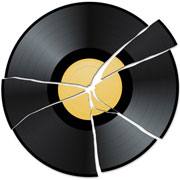Its pretty interesting to see that you are investigating this whole ACELL thing. I was kinda wondering one day if you would be one of the DOCs to have this Acell cross your mind. I just ran into this whole page doing a daily Google study on Acell and the usual Hair loss deal and saw that yeah you are thinking about it. Good to see.
Would it make sense to use Acell injections/Powder in the donor area after a strip or FUE procedure as well as Acell into the transplant area such as the frontal hairline area, etc? I have read that it helps the wounds heal faster and the scar feels better when healed With ACell then if healed naturally. IF you said that you saw that it had value in the scar area after a strip procedure. Would it then also have the same value in the transplanted area where it would cause the tiny pin holes after the hair follicle is grafted to heal faster and be less present? As well as help heal the tiny holes after a FUE procedure in the donor area where the follicle was removed. In theory In the long run, would it show almost no scaring anywhere after any type of transplant. Weather its a strip or fue?
I know all the hype is about cloning this and that and plucked hairs growing everywhere. but in the sense where it promotes rapid healing and helps the scar look/feel more natural or show almost no scarring at all. IS that not a great value to the whole hair transplant community?
There are a bunch of cases where grafts that were installed were driven into deep and look like indents after all is done and healed. Im speaking from my own experience from a procedure. Those little bastards are ugly so would that Acell bacon compound help that case as well?
So ACell alone without FRP or whatever they call it for faster healing and better cosmetic scar results seem like a very realistic and valuable thing
Things in life like this interest me. Especially When i read about things that come out like Acell and other medical devices that could potentially help people with hair loss and hair surgery
 It it generally thought that ACell will help the healing process deep in the wound and possibly reduce the superficial scarring, thereby making better wounds. There is circumstantial evidence for this in our practice, but this is more conjecture than science. I have not seen that ACell has helped the graft healing or made it grow better.
It it generally thought that ACell will help the healing process deep in the wound and possibly reduce the superficial scarring, thereby making better wounds. There is circumstantial evidence for this in our practice, but this is more conjecture than science. I have not seen that ACell has helped the graft healing or made it grow better.
In our practice we have been using ACell for donor wound for over 3 years in most of our patients on a daily basis. Subjectively, the donor wound does look better with less tactile feel of a scar, so it may have some use in reducing keloid formation. Some patients came back for repeat surgeries and the old ACell scar seem to look better, but it was not a drastic improvement. Note that this is just a subjective observation from both the patient and doctor. ACell did not really have a reduction in the overall scar width and it does not make the scar any smaller in our observation. In one or two cases, the patient (who had prior non-ACell surgeries) thought it made the scarring worse. Even I (Dr. Rassman) had ACell put in my donor wound for strip surgery, but it made no difference in scarring compared to prior surgeries. ACell does not promote faster healing in our experience.
We also used ACell in many years ago in graft growth and even possible replication in recipient area. We submitted and applied for research approval with the medical board and conducted studies with Dr. Bernstein in New York. In the end, it didn’t work. The claims were false. To date, no one was able to replicate the claims of hair regeneration. Simply put, it was a publicity hype for the hair transplant world.

 Those who are at the highest risk for shock loss include:
Those who are at the highest risk for shock loss include: